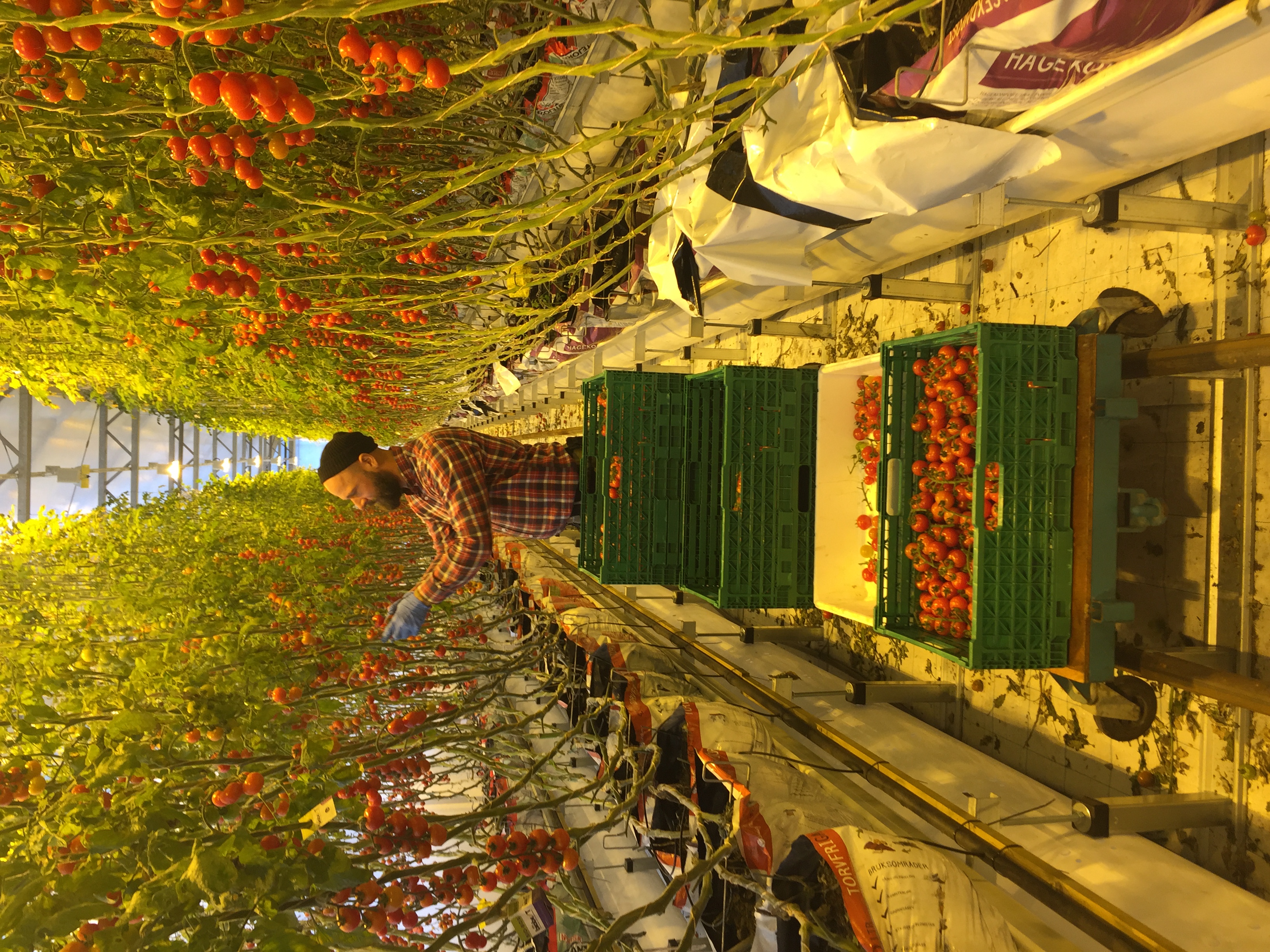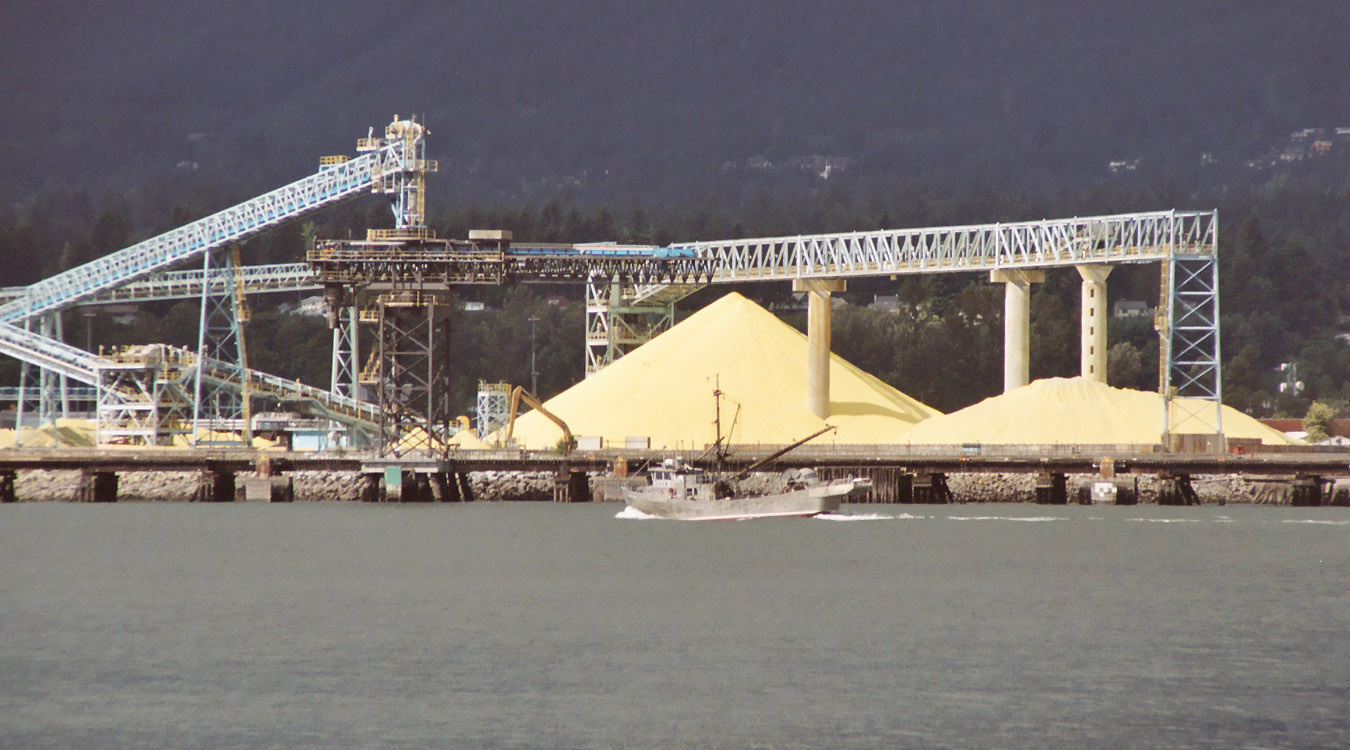|
Digestate
Digestate is the material remaining after the anaerobic digestion (decomposition under low oxygen conditions) of a biodegradable feedstock. Anaerobic digestion produces two main products: digestate and biogas. Digestate is produced both by acidogenesis and methanogenesis and each has different characteristics. These characteristics stem from the original feedstock source as well as the processes themselves. Digestate feedstock sources Anaerobic digestion is a versatile process that can use many different types of feedstocks. Example of feedstocks can be from: * Sewage sludges: Liquid sludge, untreated sewage sludge, composted sludge, and lime treated sludge. * Animal wastes: Animal fats, animal blood, food remains, stomach contents, rumen contents, animal carcasses, and poultry, fish, and livestock manure. * Energy crops: Usually corn, maize, millet, and clover. This can be whole crops used in co-digestion or as waste (stems and stalks) from harvesting of these crops. * Municip ... [...More Info...] [...Related Items...] OR: [Wikipedia] [Google] [Baidu] [Amazon] |
|
 |
Anaerobic Digestion
Anaerobic digestion is a sequence of processes by which microorganisms break down biodegradable material in the absence of oxygen. The process is used for industrial or domestic purposes to Waste management, manage waste or to produce fuels. Much of the Fermentation (biochemistry), fermentation used industrially to produce food and drink products, as well as home fermentation, uses anaerobic digestion. Anaerobic digestion occurs naturally in some soils and in lake and oceanic basin sediments, where it is usually referred to as "anaerobic activity". This is the source of Methane#Occurrence, marsh gas methane as discovered by Alessandro Volta in 1776. Anaerobic digestion comprises four stages: * Hydrolysis *Acidogenesis *Acetogenesis *Methanogenesis The digestion process begins with bacterial hydrolysis of the input materials. Insoluble organic polymers, such as carbohydrates, are broken down to soluble derivatives that become available for other bacteria. Acidogenesis, Acidogen ... [...More Info...] [...Related Items...] OR: [Wikipedia] [Google] [Baidu] [Amazon] |
 |
Digeponics
Digeponics (pronounced die-jeh-ponics, as in digestion) is a method of agriculture which integrates the products of anaerobic digestion, including CO2 and digestate, with greenhouse cultivation of vegetables. Background Digeponics was developed in Norway by the "Food to Waste to Food" (F2W2F) program, a part of the EU Eco-innovation Initiative, in partnership with the waste management company Lindum AS. Overall concept The method involves the use of various products of anaerobic digestion in the cultivation of vegetables in a greenhouse environment. The more widely used aspects include the use of biogas for electricity production, which is used for lighting and heating the greenhouse in the winter months, as well as the introduction of carbon dioxide into the greenhouse, which is a byproduct of biogas combustion, for increased plant growth. The more novel aspect of this method is the use of a "mix of vermicompost and garden waste compost fertilized by (non-separated) diges ... [...More Info...] [...Related Items...] OR: [Wikipedia] [Google] [Baidu] [Amazon] |
 |
Biogas
Biogas is a gaseous renewable energy source produced from raw materials such as agricultural waste, manure, municipal waste, plant material, sewage, green waste, Wastewater treatment, wastewater, and food waste. Biogas is produced by anaerobic digestion with anaerobic organisms or methanogens inside an Anaerobic digestion, anaerobic digester, biodigester or a bioreactor. The gas composition is primarily methane () and carbon dioxide () and may have small amounts of hydrogen sulfide (), moisture and siloxanes. The methane can be combusted or oxidized with oxygen. This energy release allows biogas to be used as a fuel; it can be used in fuel cells and for heating purpose, such as in cooking. It can also be used in a gas engine to convert the energy in the gas into electricity and heat. After removal of carbon dioxide and hydrogen sulfide it can be compressed natural gas, compressed in the same way as natural gas and used to power Alternative fuel vehicle, motor vehicles. In the Un ... [...More Info...] [...Related Items...] OR: [Wikipedia] [Google] [Baidu] [Amazon] |
 |
Feedstock
A raw material, also known as a feedstock, unprocessed material, or primary commodity, is a basic material that is used to produce goods, finished goods, energy, or intermediate materials/Intermediate goods that are feedstock for future finished products. As feedstock, the term connotes these materials are bottleneck assets and are required to produce other products. The term raw material denotes materials in unprocessed or minimally processed states such as raw latex, crude oil, cotton, coal, raw biomass, iron ore, plastic, air, logs, and water. The term secondary raw material denotes waste material which has been recycled and injected back into use as productive material. Raw material in supply chain Supply chains typically begin with the acquisition or extraction of raw materials. For example, the European Commission notes that food supply chains commence in the agricultural phase of food production. A 2022 report on changes affecting international trade noted that impro ... [...More Info...] [...Related Items...] OR: [Wikipedia] [Google] [Baidu] [Amazon] |
 |
Plastic Compounding
Compounding consists of preparing plastic formulations by mixing and/or blending polymers and additives in a molten state to achieve the desired characteristics. These blends are automatically dosed with fixed setpoints usually through feeders/hoppers. It is mostly a blend of copolymers such as ABS, SAN, SMA etc. with additives such as anti-oxidants, UV-stabilizers and other value adding agents and sometimes a strengthening component is added such as glass fibre. There are different critical criteria to achieve a homogeneous blend of the different raw material. Dispersive and distributive mixing as well as heat are important factors. Compounding is usually done by extrusion. The hopper feeds the begin of the screw which will gradually transport the resins towards the die. The screw itself is confined in a barrel that has different zones that can be heated according to the resins properties. Co-kneaders and twin screws (co- and counter rotating) as well internal mixers are th ... [...More Info...] [...Related Items...] OR: [Wikipedia] [Google] [Baidu] [Amazon] |
|
Environmentally Friendly
Environment friendly processes, or environmental-friendly processes (also referred to as eco-friendly, nature-friendly, and green), are sustainability and marketing terms referring to goods and services, laws, guidelines and policies that claim reduced, minimal, or no harm upon ecosystems or the environment. Companies use these ambiguous terms to promote goods and services, sometimes with additional, more specific certifications, such as ecolabels. Their overuse can be referred to as greenwashing.Greenwashing Fact Sheet. 22 March 2001. Retrieved 14 November 2009. frocorpwatch.org To ensure the successful meeting of Sustainable Development Goals (SDGs) companies are advised to employ environmental friendly processes in their production. Specifically, Sustainable Development Goal 12 measures 11 targets and 13 indicators "to ensure sustainable consumption and production patterns". The International Organization for Standardization has developed ISO 14020 and ISO 14024 t ... [...More Info...] [...Related Items...] OR: [Wikipedia] [Google] [Baidu] [Amazon] |
|
|
Plant
Plants are the eukaryotes that form the Kingdom (biology), kingdom Plantae; they are predominantly Photosynthesis, photosynthetic. This means that they obtain their energy from sunlight, using chloroplasts derived from endosymbiosis with cyanobacteria to produce sugars from carbon dioxide and water, using the green pigment chlorophyll. Exceptions are parasitic plants that have lost the genes for chlorophyll and photosynthesis, and obtain their energy from other plants or fungi. Most plants are multicellular organism, multicellular, except for some green algae. Historically, as in Aristotle's biology, the plant kingdom encompassed all living things that were not animals, and included algae and fungi. Definitions have narrowed since then; current definitions exclude fungi and some of the algae. By the definition used in this article, plants form the clade Viridiplantae (green plants), which consists of the green algae and the embryophytes or land plants (hornworts, liverworts ... [...More Info...] [...Related Items...] OR: [Wikipedia] [Google] [Baidu] [Amazon] |
|
|
Soil
Soil, also commonly referred to as earth, is a mixture of organic matter, minerals, gases, water, and organisms that together support the life of plants and soil organisms. Some scientific definitions distinguish dirt from ''soil'' by restricting the former term specifically to displaced soil. Soil consists of a solid collection of minerals and organic matter (the soil matrix), as well as a porous phase that holds gases (the soil atmosphere) and water (the soil solution). Accordingly, soil is a three- state system of solids, liquids, and gases. Soil is a product of several factors: the influence of climate, relief (elevation, orientation, and slope of terrain), organisms, and the soil's parent materials (original minerals) interacting over time. It continually undergoes development by way of numerous physical, chemical and biological processes, which include weathering with associated erosion. Given its complexity and strong internal connectedness, soil ecologists ... [...More Info...] [...Related Items...] OR: [Wikipedia] [Google] [Baidu] [Amazon] |
|
|
Moisture Retention
Photoelectrochemical processes are processes in photoelectrochemistry; they usually involve transforming light into other forms of energy. These processes apply to photochemistry, optically pumped lasers, sensitized solar cells, luminescence, and photochromism. Electron excitation Electron excitation is the movement of an electron to a higher energy state. This can either be done by photoexcitation (PE), where the original electron absorbs the photon and gains all the photon's energy or by electrical excitation (EE), where the original electron absorbs the energy of another, energetic electron. Within a semiconductor crystal lattice, thermal excitation is a process where lattice vibrations provide enough energy to move electrons to a higher energy band. When an excited electron falls back to a lower energy state again, it is called electron relaxation. This can be done by radiation of a photon or giving the energy to a third spectator particle as well. In physics there is a ... [...More Info...] [...Related Items...] OR: [Wikipedia] [Google] [Baidu] [Amazon] |
|
|
Soil Conditioner
A soil conditioner is a product which is added to soil to improve the soil’s physical qualities, usually its fertility (ability to provide nutrition for plants) and sometimes its mechanics. In general usage, the term "soil conditioner" is often thought of as a subset of the category soil amendments (or soil improvement, soil condition), which more often is understood to include a wide range of fertilizers and non-organic materials. In the context of construction soil conditioning is also called soil stabilization. Soil conditioners can be used to improve poor soils, or to rebuild soils which have been damaged by improper soil management. They can make poor soils more usable, and can be used to maintain soils in peak condition. Composition A wide variety of materials have been described as soil conditioners due to their ability to improve soil quality. Some examples include biochar, bone meal, blood meal, coffee grounds, compost, compost tea, coir, manure, straw, peat, spha ... [...More Info...] [...Related Items...] OR: [Wikipedia] [Google] [Baidu] [Amazon] |
|
|
Methane
Methane ( , ) is a chemical compound with the chemical formula (one carbon atom bonded to four hydrogen atoms). It is a group-14 hydride, the simplest alkane, and the main constituent of natural gas. The abundance of methane on Earth makes it an economically attractive fuel, although capturing and storing it is difficult because it is a gas at standard temperature and pressure. In the Earth's atmosphere methane is transparent to visible light but absorbs infrared radiation, acting as a greenhouse gas. Methane is an Organic chemistry, organic Organic compound, compound, and among the simplest of organic compounds. Methane is also a hydrocarbon. Naturally occurring methane is found both below ground and under the seafloor and is formed by both geological and biological processes. The largest reservoir of methane is under the seafloor in the form of methane clathrates. When methane reaches the surface and the Atmosphere of Earth, atmosphere, it is known as atmospheric methane. ... [...More Info...] [...Related Items...] OR: [Wikipedia] [Google] [Baidu] [Amazon] |